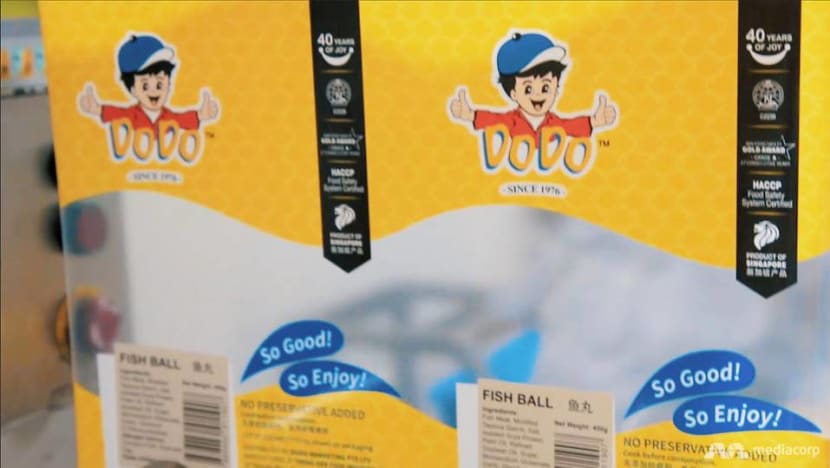From a kampung shed, how a family fishball empire was built on automation
The founders of the DoDo brand, now a household name in Singapore, have transformed the simple and much-loved fish ball into a multimillion dollar enterprise. But is the factory-made version just as good?

Today, the company processes over 15 tonnes of fish meat daily.
SINGAPORE: It was in a shed behind their kampung house in Changi where the Lim family first made fish balls by hand – scraping, seasoning, mixing and moulding yellow-tail fish into balls well into the night.
Patriarch Lim Boon Chay got into this trade out of necessity; as a provision shop owner in the 1970s, fish balls were among his best-selling items, but the quality and supply provided to him were inconsistent.
One of his customers recommended that he make his own fish balls, generously shared a recipe and taught him how to do it.
Mr Lim’s eldest daughter Novelle, who was a toddler then, recalled spending many hours playing at the shed, watching her parents and grandparents at work, and then helping out during the holidays when she was in primary school.
They even operated stalls at a wet market during the peak Chinese New Year period, when she would pitch in overnight.
That was how the DoDo brand of fish balls started, growing to a 150,000-square-foot factory in Senoko Way – and another in Malaysia.
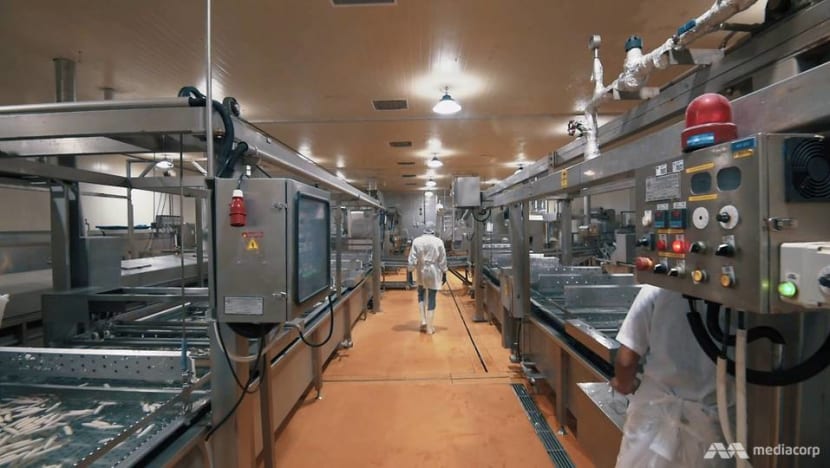
Today, with a workforce of 500, the two factories process over 15 tonnes of fish meat daily and more than 60 varieties of fish-based foods, such as yong tau foo products, for Singapore and some 20 overseas markets.
But all this would not have happened if Mr Lim did not have the foresight to venture into automation early on.
“If we’d continued to make fish balls by hand, we wouldn’t have been able to grow the business because there’d be a limitation on the production volume,” said Ms Lim, the deputy CEO of Thong Siek Global, which also distributes the DoDo fish balls and other products.
READ: Fish balls made by hand and sold out daily? Meet one of a rare breed of hawkers
KAMPUNG TO FLAT, SHED TO FACTORY
The family’s big break came in the 1980s, when they had to move from their kampung house to a public flat, forcing them to upgrade their fish-ball-making shed to a proper factory. But operations were still labour-intensive.
It was during this time that Mr Lim travelled to Osaka, Japan on a study trip, and learned that fish balls could be frozen and were found in many forms and flavours there.
“When he came back, he said, ‘Oh, this business can grow very big. It can grow beyond Singapore.’ And that’s when he started to look at exporting our products,” recalled his 42-year-old daughter.

He decided to automate processes to increase the output, and introduced the concept of vacuum-packed fish balls, which gave the product a four-week shelf life.
“I think, in the 1990s, we were the first company to sell fish balls in the supermarket,” Ms Lim said proudly.
After adopting the Japanese way of production, they were able to increase their output from three tonnes a year in the 1970s to more than six tonnes in 1984 to nearly 5,500 tonnes of all products today.
Their fully automated lines now include grinding, processing and auto-packaging facilities.
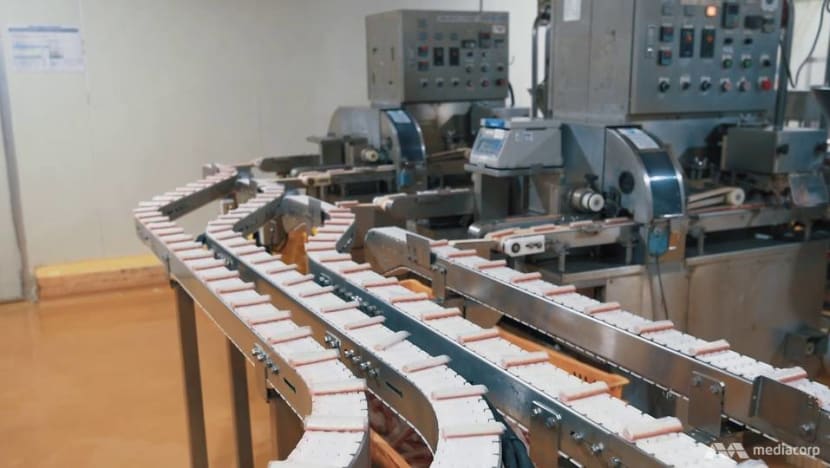
When they first ventured into mass production, however, their challenge was to maintain the taste and quality of their fish balls. They had to design processes to suit their recipes.
To start off, they decided to use raw materials from Japan. “We knew there was already processed fish meat that we could use. It was consistent in quality and there was no fish odour, as compared to handmade,” she said.
The fish paste, or surimi, from Japan is composed mainly of fish. “This was the turning point of the business. So our product became more consistent in terms of quality,” added Ms Lim.
“Along the way, of course, when we formed the fish balls into shape, it was by hand, (but now) we were using machines.”
Now, they import surimi from many countries, such as Vietnam, Thailand and Indonesia.
“They wash away all the blood of the fish … the water-soluble protein, and what’s left are the proteins that are good for making fish balls,” Ms Lim said, adding that the taste is no different from their handmade fish balls.
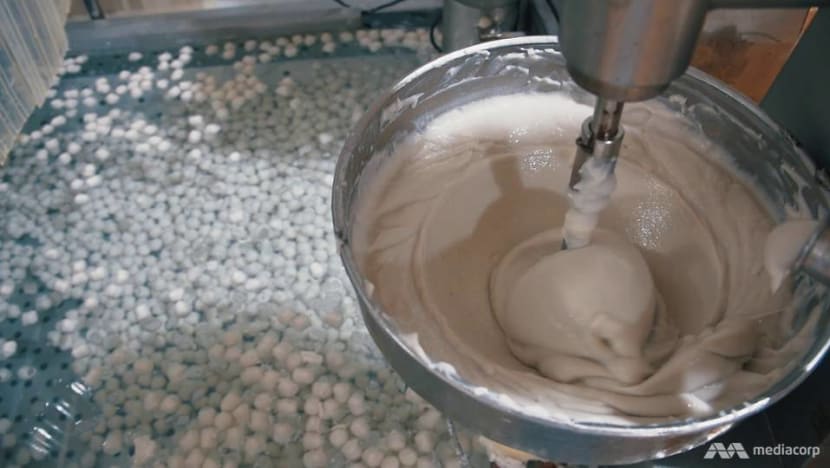
TAKING THE BUSINESS TO THE NEXT LEVEL
The family also invested in equipment from Japan to blend the seasoned paste (it contains yellow-tail fish fillet) based on their recipe.
The paste goes along an automated line, where a machine moulds it in the shape of a fish ball, which then passes through a metal detector, is cooked, vacuum-packed and frozen before it is distributed locally or overseas.
For the fresh fish balls, there is a “hand-shaped” machine to mimic the irregular texture of real handmade fish balls.
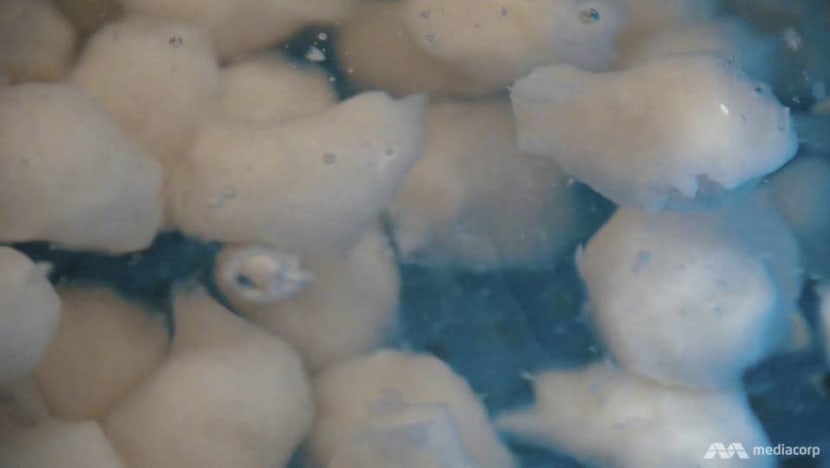
Mr Lim is so particular about their quality of the products that there is even a machine called a texture analyser. It mimics the human biting action, testing the hardness and flexibility of the fish ball from the production line.
One of the staff also samples and grades the fish ball. “It should be springy and firm,” said one of the quality control supervisors.
The paste is regularly sent to the research and development team to test its quality before it is made into fish balls.
As a small and medium enterprise, the company faced challenges, such as funding and talent retention, when the business was growing.
But Ms Lim acknowledged the support from various agencies, such as the Economic Development Board, the Agri-Food and Veterinary Authority and Enterprise Singapore (formerly International Enterprise Singapore and Spring Singapore).
In 2015, Thong Siek Holdings received a further boost when food catering firm Neo Group bought a 55 per cent stake in it for S$7.35 million.
Following the acquisition, Thong Siek expanded into new markets such as North America, Europe and Hong Kong.
“We’ve come a long way, I think – from a family-run, backyard business to a structured, corporate business because we’re now part of the Neo Group,” said Ms Lim.
“We’re now more structured, with policies in place, with management systems … My dad has brought the company to this level. I think, together with Neo Group, we’ll be moving the business to the next level.”
IS HANDMADE BETTER THAN FACTORY-MADE?
Although automation has taken over the operations, some processes are still too delicate to be done by machinery and are largely done by hand, such as the cutting of yong tau foo and inserting the fish paste.
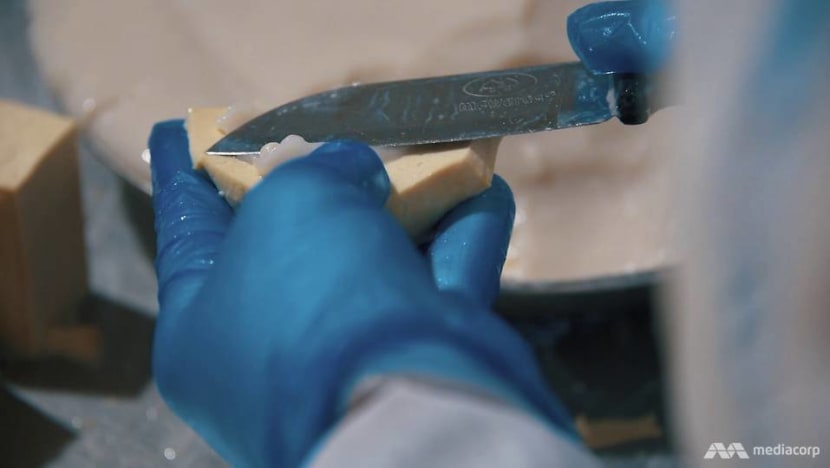
Apart from supermarket chains, some of the company’s clients include stall owners, who find it difficult to hire manpower to make the yong tau foo items from scratch.
“It’s really tiring. They’d have to get up very early in the morning, like 3am or 4am,” said Ms Lim.
“(Many) stall owners don’t do the fish balls from scratch any more. Some of them buy the yellow-tail fillet from us (or) the ready-made paste … They’d just need to form them into shapes – into the fish balls – at their stalls.”
She has become so familiar with the products, especially the yong tau foo, that when she patronises a stall, she can recognise the taste of the paste if it is from DoDo.

When asked if there is value in still making fish balls by hand, Ms Lim said it does “touch people’s hearts”.
“People think it’s different, although the taste and texture are the same as what we produce in the factory. It’s the sentimental value, I think,” she added.
She disagreed that traditional fish balls are necessarily better than factory-made ones. Her factory, she maintained, produces good fish balls, similar to what some hawkers make on their own.
To produce its fresh local fish balls, the factory uses yellow-tail fish from Indonesia, which the supplier fillets and freezes before exporting.
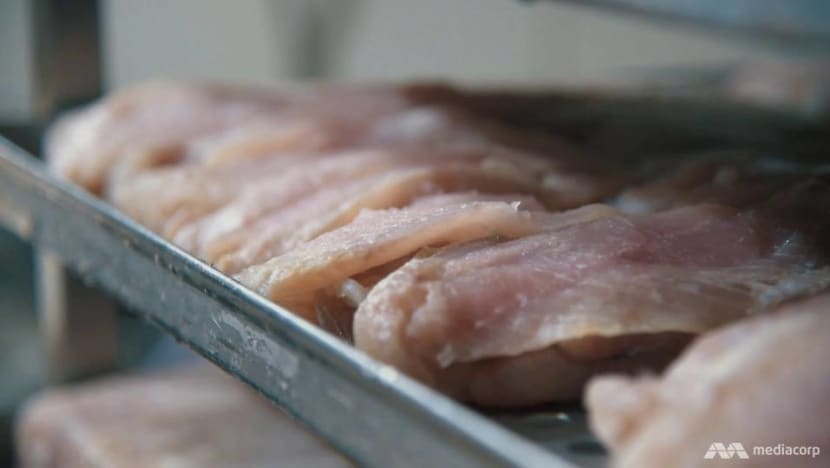
“The process is the same with the hand-scraped ones. We’d blend them, form them into shapes, and the difference is we won’t cook it, so that our consumers would buy the fresh fish balls to cook back home,” she said.
“The key to the taste is the raw materials we use.”
To her, making fish balls is not only a business, but also a passion, having grown up with the product.
“I think fish balls are now one of the signature products of Singapore. We’re proud to be part of this business,” she said.
“I’ve seen it evolving from a backyard business to automation, from the Singapore market to the overseas market. So I’ve this mission to grow this business and bring this product to the world.”
Read about one of a rare breed of hawkers whose fish balls are made by hand and sold out daily.
